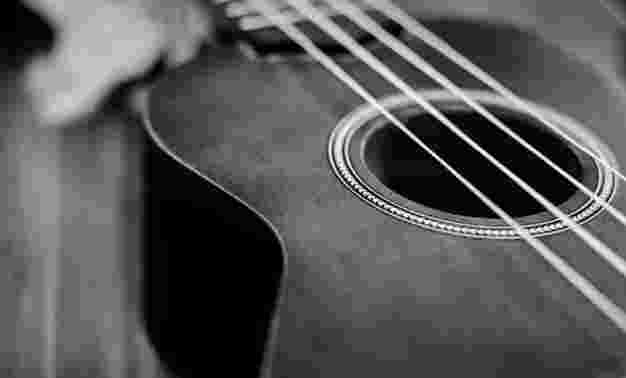Music is considered a cultural universal, although the definitions of it are different around the world and throughout history.
As well as many aspects of human awareness, it is still arguing about the extent of the origin of the music that will be understood, with scholars who often take over polar positions.
The origin of music is often discussed with the origin of the language, with the nature of their connection is the theme of many debates.
However, before the mid -20th century, both topics were rarely noticed by scholars.
Since the revival of the topic, the main controversial source is divided into three views: whether the music has started as a type of Proto language (the result of liking Nghi) leads to language or not; If music is a Spandrel (a by -products of evolution) is the result of language; Or if music and language are derived from a common premise.
There is very little consensus on any specific theory of the origin of music, including contributions from archaeologists, cognitive scientists, ethnographic houses, evolutionary biologists, Linguists, neurologists, biologists, philosophers and psychologists (development and social). Some of the most prominent theories are as follows:
Music arises as a form of complex sex selection, perhaps arising in mating calls. This theory, perhaps the first meaning of the origin of music, is often recorded for Charles Darwin.
It first appeared in Darwin Descent of Man’s book in 1871, and sex -related options, and from there have been criticized for no evidence that shows no evidence showing that Human gender is “more music”.
So there is no evidence of sexual deformity; There are currently no other examples of sex options, not including significant sexual depletions.
Recent commentators, citing music in other animal mating systems, have propagated and developed Darwin’s theory anyway; Such scholars include Peter J.B. Slater, Katy Payne, Bjorn Marker, Geoffrey Miller and Peter Todd.
Music arises with language, both are thought to be from a “shared predecessor”. Herbert Spencer is an important initial supporter of this theory, as well as the composer Richard Wagner, the called ancestor shared of music and language is “Voice of “.
Music Pre-History
In the broadest sense, prehistoric music, often called the original music in the past has a common ancestor. Music first arises during the Paleolithic period, Although it is not clear whether this is an average (300,000 to 50,000 BP) or the upper Paleolithic (50,000 to 12,000 BP).
The majority of Paleolithic musical instruments were found in Europe and the day to Coper Paleolithic. Certainly singing has appeared very far before this time, although this is basically unable to confirm.
The oldest instrument is the Divje Babe flute from the Divje Babe cave in Slovenia, from 43,000 and 82,000 and made from a young bear bear.
Used by Neanderthals, flute Divje Babe has received the attention of academic academic, and whether it is really a musical instrument or an object formed by animals as the theme of the picture. intense argument.
If before, it would be the oldest instrument known and evidence of music culture in Middle Paleolithic.
Different from the Divje Babe and three other suspicious flutes, There is almost no evidence of any intermediary music that survives any certainty, similar to the situation related to. visual arts.
The earliest specified subjects are widely accepted instruments are bone flutes from Swabian Jura, Germany, namely from Geissenklösterle, Hohle Fels and Vogelherd Hang.
There is a dating of Aurignacian (by Coperalithic Upper) and used by modern people in the early European period, from all three caves have eight examples.
Four examples made from the wings of the bird and the bird and Four words with mammoths; The three of these were almost completed. Three flutes from Geissenklösterle dating to the oldest, c. 43,150–39,370 BP.
Considering the relative complexity of flutes, it is likely that earlier instruments existed, similar to those common in later hunter-gatherer societies, such as rattles, shakes and drums.
The absence of other tools from and before this period may be due to the fact that they used weaker, and therefore more easily decomposed materials such as reeds, gourds, leather, and bark.
A painting in the Trois-Frères Cave dating from c. It is thought that 15,000 BC you represent a shaman playing a musical bow, also read The Origin Of Music In Different Cultures.
Prehistoric cultures are thought to have had many uses of music, with little unity among the different societies. Music can be especially popular when food and other basic needs are in short supply.
It is also possible that prehistoric cultures viewed music as having an essential connection to nature, and may believe that its use directly influenced the natural world.
The earliest musical instruments found in prehistoric China are the 12 bone gudi flutes in present-day Jiahu, Wuyang, Henan province, from c. 6000 BC.
The only tools dating to prehistory of the Xia Dynasty (circa 2070–1600) are two qi rods, two bells (one terracotta, one terracotta, one in copper) and a penny.
Due to the extreme scarcity of surviving instruments and the uncertainty surrounding most of Xia, it is impractical to create a musical narrative of the period.
In the Indian subcontinent, the prehistoric civilization of the Indus Valley (from c. 2500-2000 BC in its mature state) has archaeological evidence indicating that simple rattles and vase flutes were used.
While iconographic evidence suggests that early harps and drums also existed An ideogram in the later IVC contains the earliest known representation of a bow harp, dated before 1800 BC.
